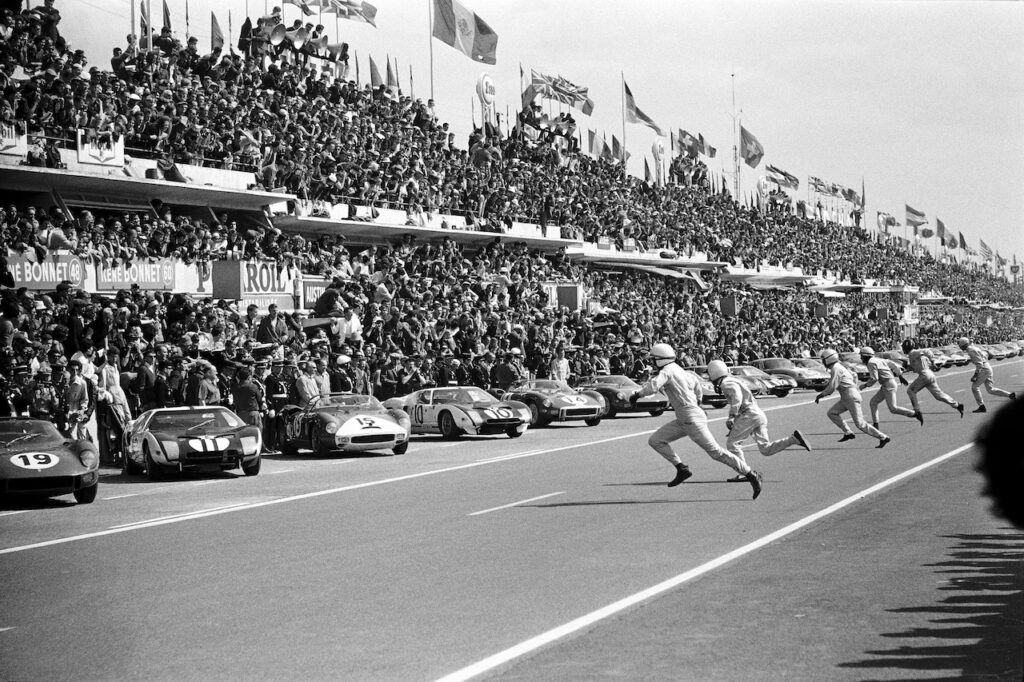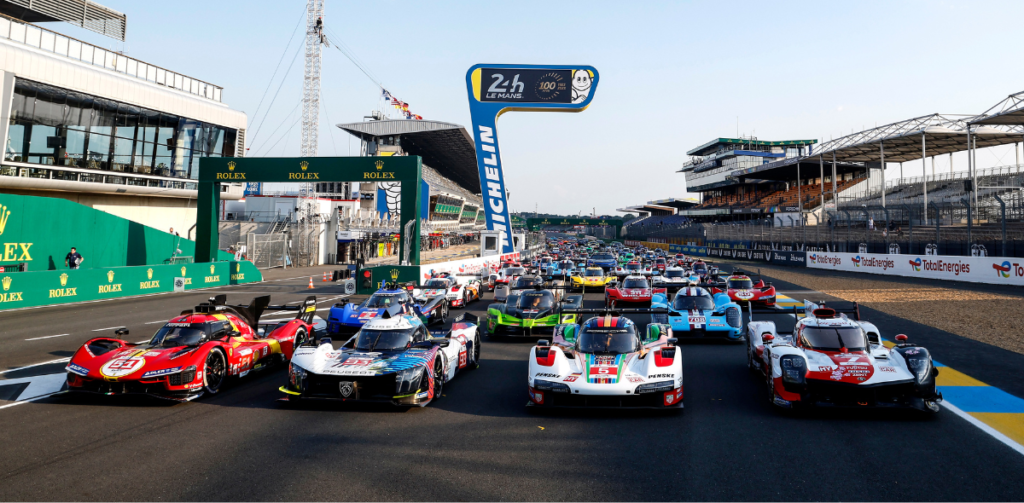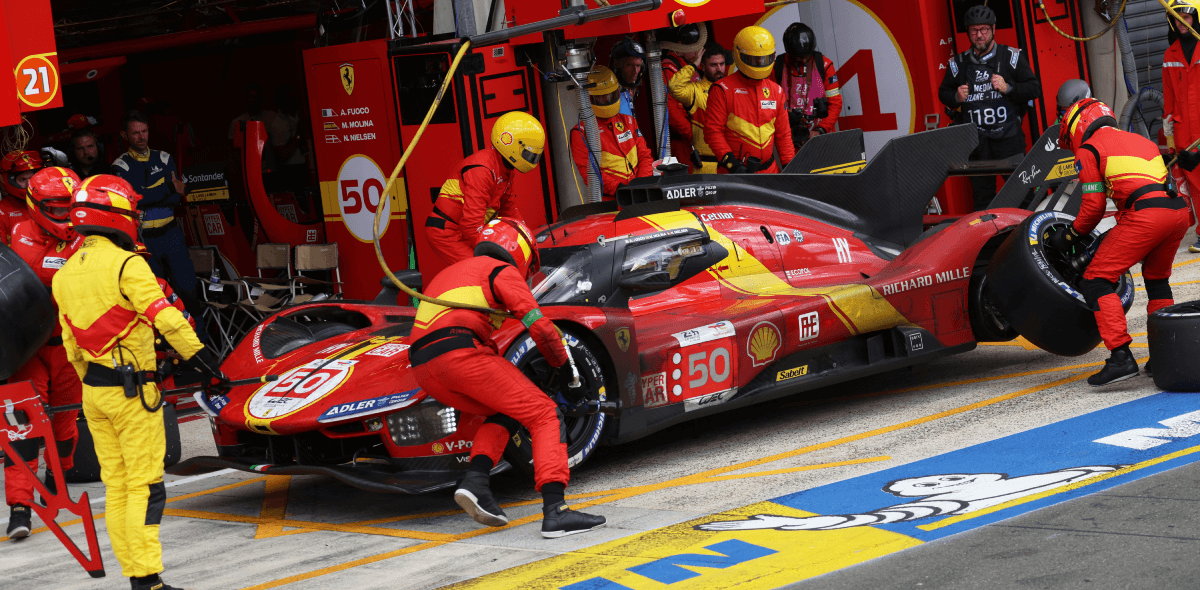Now over 100 years old, the Le Mans 24h race is the ultimate test of endurance. Our guide will help you become a Le Mans 24hr expert in minutes, providing useful stats and facts about the rules, car classifications and how you can book your tickets to one of the world’s most thrilling motorsport events!
How does the Le Mans 24h race work?
Considered one of the most prestigious races in the world, the winner of the Le Mans 24h race is the car that covers the greatest distance in 24 hours is the winner. All teams must rotate three drivers through the car during the race, with no single driver behind the wheel for more than 14 hours in total.
What are the different classes of cars?
Competing teams race in three categories (known as classes) which feature cars of a similar spec. These classes are:
- Hypercar – This is the top prototype class, featuring the fastest and most technologically advanced cars in the race.
- LMP2 – This class is often seen as a stepping stone for drivers and teams aiming to move up to the Hypercar class.
- LMP3 – An amateur-level prototype class for modified versions of road-legal, production-based sports cars such as Ferrari, Porsche and Aston Martin.
How does the race start?
A safety car leads the drivers round one lap of the Circuit de la Sarthe maintaining the order in which they qualified. At the end of the lap, the safety car will enter the pit lane at the end of this lap, signifying that the race can begin. The official 24-hour timer starts ticking once ever car has crossed the line.
The Le Mans start was famous as the drivers used to races across the track to their cars to begin the race. This ritual was stopped due to safety regulations.

Qualifying and practice sessions
A few days’ prior to the race, teams are permitted some free practice time to test their cars on the track and make any final adjustments. The qualifying stage then consists of two sessions. The first is a 60-minute race with all 62 cars on the track, vying to finish in the top six of their class. The second session, known as Hyperpole, runs for 30 minutes and features the top six qualifiers from each respective class competing for pole position. No refuelling is permitted during the Hyperbole. If a car fails to set a lap time during this session, it will start sixth in its class, behind the Hyperpole runners but ahead of the non-qualifiers.
Refuelling and tyre regulations
Once the car enters the pitlane, the engine must be switched off and the car has to be at a complete standstill before any work can commence. Mechanics are allowed to change wheels and refuel at the same time, but major repair work is not permitted. Only four mechanics are permitted to work on the car while it is in the pitlane.
What do the flags mean?
As is the case in most motorsports, flags play a significant role during the Le Mans 24-hour race. In the event of any minor incidents occurring, such as debris on the track or a car with a mechanical fault, a yellow flag may be shown to warn drivers to reduce their speed and be aware of a hazard on the circuit.
If there has been a serious crash or severely adverse weather conditions, a red flag is shown, meaning drivers must slow down and return to the ‘red flag line.’
How many laps are there in Le Mans 24h?
There is no set number of laps for drivers to complete. The winning car is the one that does the highest number of laps or covers the greatest distance within 24 hours. The record for the most laps ever completed was 397 in the winning Audi R15+ TDI car at the 2010 24h race.
What time does the race start and finish?
For 2026, the Le Mans 24h race will start at 15:00 (CEST) on 13th June and end at 15:00 (CEST) on 14th June.
How many drivers are there in the Le Mans 24h?
There are three drivers per car, alternating throughout the 24-hour period. Multiple drivers are required to swap over every few hours for safety reasons. When not racing, drivers are encouraged to rest away from the track – which is easier said than done, due to adrenalin!
This rotation helps keep fatigue at bay and enables the drivers to race at maximum performance over the full 24 hours.

How many cars are permitted to race at Le Mans?
A maximum of 62 cars are allowed on the grid to race, with a reserve list on standby. In 2024, the Circuit de la Sarthe grid will comprise of 23 Hypercars, 16 LMP2s and 23 LMGT3s.
How many miles is the Le Mans 24h?
One lap of the Le Mans Circuit de la Sarthe is approximately 8.5 miles (13.6 km) long. The greatest number of miles achieved was during the 2010 race, where the German / French team of Mike Rockenfeller, Timo Bernhard and Romain Dumas covered 3362.06 miles (5410.71km).
What is the most dangerous part of the race?
The Mulsanne Straight / Corner is the section of the race where most accidents tend to occur, particularly in the last few hours of the race when fatigue starts to creep in. The six-metre stretch is interrupted by two chicanes, forcing drivers to break at high speeds. It’s not uncommon for drivers to misjudge the Mulsanne Corner too, with cars frequently ending up crashing into the barriers.
Ready to book your tickets for the Le Mans 24h race?
Now you’ve discovered everything you need to know about the race and how it works, it’s time to come and experience the magic for yourself! Head over to our main Le Mans 24hr booking page and book your Le Mans package or sign up for ticket alerts today.
